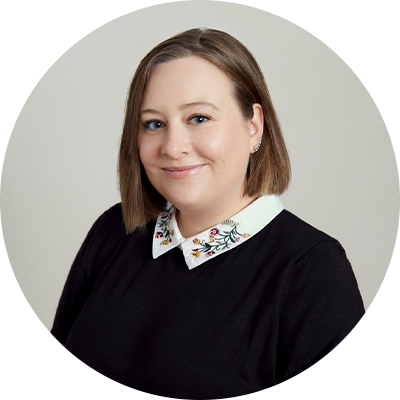I mean, think about it. It’s like asking, how much money do I need to buy a house? Well, it depends on the size and style of your desired home, where you want to live, and what the interest rates are while you pay down your mortgage.
The same holds for retirement. Before you can figure out how much you need to save, you’ve first got to decide how you want to live during your golden years and estimate what rate of return you can expect to earn on your investments.
What kind of retirement do I want?
Do you want a quiet life at home or do you want to travel? Do you want to live in the same city you worked in, or do you want to retire to the country? Do you want to retire at age 65, earlier or later? And does your ideal retirement include any part-time work, or do you want to stop working entirely?
For our purposes, let’s assume you want to retire at or around age 65, living the “life to which you’ve become accustomed” — in other words, the same location and standard of living as during your working years. But we’ll check back in with some of these questions later.
How much can I expect to earn on my investments?
Since nobody has a crystal ball, it’s impossible to predict how markets will perform in the future. One thing you can, predict, however, is how much you will pay in fees on your investments. In Canada, fees are usually “baked-in” to investments, meaning that a certain percentage comes off the top of your returns to pay your bank or brokerage. The less you pay in fees, the higher your actual returns.
If you use a robo advisor or discount brokerage, you can set up a diversified portfolio using passive investing strategies (e.g., the “couch potato” strategy) with much lower fees than you’d pay through a bank or traditional brokerage. Assuming, then, that you aren’t losing 2% to 3% of your investment returns to fees, we’ll use a moderate rate of return of 4% when determining how much you need to save for retirement.
READ MORE: A guide to retirement savings plans in Canada
Estimate your future cost of living
Didn’t we already say that we’re going to assume the same standard of living as you currently enjoy? Yes, we did. But that doesn’t mean your monthly or annual costs will be exactly what they are now.
Consider housing, for example. Are you currently paying a mortgage, and expect to own your home outright by the time you retire? If so, your housing costs in retirement will be lower than they are now. If you own a home and plan to downsize to a condo, you’ll have to add in the condo fees, but subtract any money you spend right now on landscaping or maintenance.
Do you have kids? If so, you’re probably spending some major coin on them. Hopefully, they’ll leave the nest by the time you’re retired, so you don’t have to budget for their food, hockey equipment and orthodontics in retirement. (You may want to budget for your own dental work, however, which can get pricey if you want to hang on to your full set of choppers right until the end.)
Finally, since you’ll be retired and living off your savings, you won’t need to save any more money for retirement.
Do the math
Here’s a fictional example. Let’s say Joe and Jane are both 33 years old, are married and have a combined net (after tax) income of about $75,000. (According to the latest census data, the total median after-tax household income in Canada was $61,300 in 2015, so Joe and Jane are doing better than average.) Neither has a company pension.
They own a home in London, Ont., (a mid-sized city) and have a toddler in daycare. They pay about $1,850 a month (or $22,200 a year) for their mortgage and $400 a month (or $4,800 a year) on part-time daycare (as their parents help out with child care three days a week). They lease a car and don’t carry any debt aside from their mortgage. They have been saving about 10 percent of their net income ($7,500) each year for their retirement.
Assuming Joe and Jane will stay in their house, which will be paid down by the time they retire in 2053 at age 65, and assuming they expect to have the same standard of living as they do now, they will need approximately $40,500 in after-tax annual income (in today’s dollars) at retirement.
$75,000 current annual net income
- Minus $22,200 annual mortgage payments
- Minus $4,800 annual daycare payments
- Minus $7,500 annual retirement savings
= $40,500 estimated annual net retirement income (needed to maintain current standard of living)
Check your assumptions
As we said at the start, the amount you need to save for retirement depends on many factors. For example, if you’re not a homeowner, you’ll need to continue paying rent during retirement and won’t be able to deduct housing costs from your estimated future cost of living. Similarly, if you don’t travel much now, but plan to take one or two trips a year during retirement, you’d have to add those expenses into your future cost of living estimate.
Most importantly, if you are not currently living within your means — in other words, if you are using debt to supplement your income to support your current lifestyle — you need to add the annual amount in borrowed funds (and the annual payments to service the debt) to your future cost of living estimate. (Also: if this is you, you really need to create a budget to pay off your debt ASAP.)
Subtract government benefits
Okay, so we’ve determined Joe and Jane need about $40,500 a year in net retirement income in today’s dollars. But that doesn’t have to come entirely from their personal savings. Since they’ve been working in Canada, they will be entitled to collect Canada Pension Plan benefits. And, under a certain income threshold (for 2020, that threshold is $128,149), all Canadians can also collect Old Age Security after age 65.
In our example, we’ll assume Joe and Jane are each eligible to receive about $675 of CPP per month (the average for new recipients in June 2020 was $710.41) and about $600 each in monthly OAS (the maximum as of December 2020 is $614.14). That works out to $2,550 a month, or $30,600 a year in today’s dollars.
(To figure out how much you are likely to receive in CPP and OAS, try out the Government of Canada’s Canadian Retirement Income Calculator.)
But – and this is a very big but – those payments from the government are in pre-tax dollars. You still need to pay taxes on them — and the rate you pay depends on your total income for the year.
Assuming Joe and Jane earn enough in retirement to meet their current standard of living — and assuming tax rates stay about the same as they do now — they’ll have a marginal tax rate of 20.05 percent in Ontario. That means they’ll pay taxes of about $6,275 on the $30,600 in CPP and OAS benefits they receive, reducing their take-home benefits to $24,325:
$30,600 total annual CPP/OAS for Joe & Jane
- $6,275 taxes owing on CPP/OAS (at a marginal tax rate of 20.05%)
= $24,325 net CPP/OAS payments
Now we can subtract the expected net government benefit payments from the total retirement income we estimated above, to determine how much income Joe and Jane will need each year from their personal retirement savings:
$40,500 net annual retirement income required (today’s dollars)
– $24,325 net annual CPP/OAS payments (today’s dollars)
= $16,175 net annual retirement income required from personal savings (today’s dollars)
Don’t forget inflation
Until now, we’ve been dealing with today’s dollars. Unfortunately, almost everything will have a bigger price tag in the future than it does now, in the same way, that the cheap night at the movies started out as Two-Dollar-Tuesdays back in the 1980s, and is now somewhere around $7 or $8 a ticket.
You can use an inflation calculator to convert your predicted retirement income to future dollars. Since nobody knows exactly how much the inflation rate will be over time, this is more of a guesstimate than a true prediction. Some experts predict an average inflation rate of about 2 percent a year to 2053.
Adjusted for inflation, Joe and Jane’s needs look a little different:
$76,325 net annual retirement income required (2053 dollars)
– $45,840 net annual CPP/OAS payments (2053 dollars)
= $30,485 net annual retirement income required from savings (2053 dollars)
And don’t forget taxes
Here comes that big but again — income tax. To earn an after-tax income of about $30,485 a year, Joe and Jane may actually need a gross (before tax) income that is much higher, depending on the source of their retirement income.
If Joe and Jane put all their retirement savings in a Tax-Free Savings Account, then they’ve already paid income tax on those savings when they first earned them, and whatever income is generated in retirement is tax-free.
If, on the other hand, they put their savings into RRSPs, they did not pay tax on those funds when they earned them and will have to pay tax upon withdrawal. In that situation, for Joe and Jane to have a net income of $30,500 for 25 years, they’d need an annual gross (before tax) income of about $39,000, paying about $8,000 in annual income taxes (using the same marginal tax rate of 20.05% that we assumed above).
Use a Retirement Income Calculator
A Retirement Income Calculator can help you estimate how much you need to save in total to generate the annual income you’ve calculated above, based on how well your investments perform and your expected length of retirement.
If we assume a moderate investment return averaging 4% annually, Joe and Jane will need TFSA savings of about $475,000 at age 65 if they want to generate an annual tax-free income of about $30,500 for 25 years (or until age 90).
Plugging the numbers into our retirement income calculator, we see that Joe and Jane need a significantly larger retirement next egg — $610,000 instead of $475,000 — to generate a before-tax income of $39,000 from their RRSP for 25 years (or until age 90).
Obviously, if they want to retire earlier than age 65 they’ll need more savings, and if they plan to keep working past age 65, they’ll need less in savings.
Are you saving enough?
Now that you know how much you need by the time you retire, you can see if you’re on track with your current monthly or annual savings by using a TFSA Calculator or RRSP savings calculator.
Remember, we said Joe and Jane were saving 10 percent of their take-home pay ($7,500) a year for retirement. Let’s assume they’ve been saving that much every year since age 25. Now at age 33, they have $60,000 saved up.
If they had invested those savings into their TFSAs and continue saving an additional $7,500 a year in their TFSAs until age 65 – the calculator shows they will have nearly $485,000 at retirement (assuming an annual return on investments of 4%). That meets their goal of $475,000 in TFSA savings to generate an annual income of $30,500 tax-free in retirement.
If, on the other hand, they had invested the $60,000 in RRSPs and continue to invest $7,500 in their RRSPS each year, they will come up short. According to the calculator, they must now save about $10,800 a year to hit their retirement savings goal of $610,000, to generate a gross income of $39,000 a year from their RRSPs, and a net annual income of $30,500.
More: What is the Rule of 30
The bottom line: Follow these simple steps
Figuring out how much to save for retirement is a multi-step process:
- Start by deciding how you want to live in retirement.
- Estimate your future cost of living in retirement.
- Subtract government benefits (CPP/OAS) and company pension income, if applicable, to determine the income you’ll need from retirement savings.
- Adjust for inflation and income tax.
- Use retirement income, TFSA and RRSP savings calculators to work out the total savings required, and whether you’re on track to meet your goals.
- Start saving! Get hooked up with a robo advisor or discount brokerage pronto.
READ MORE: A guide to retirement planning in Canada





